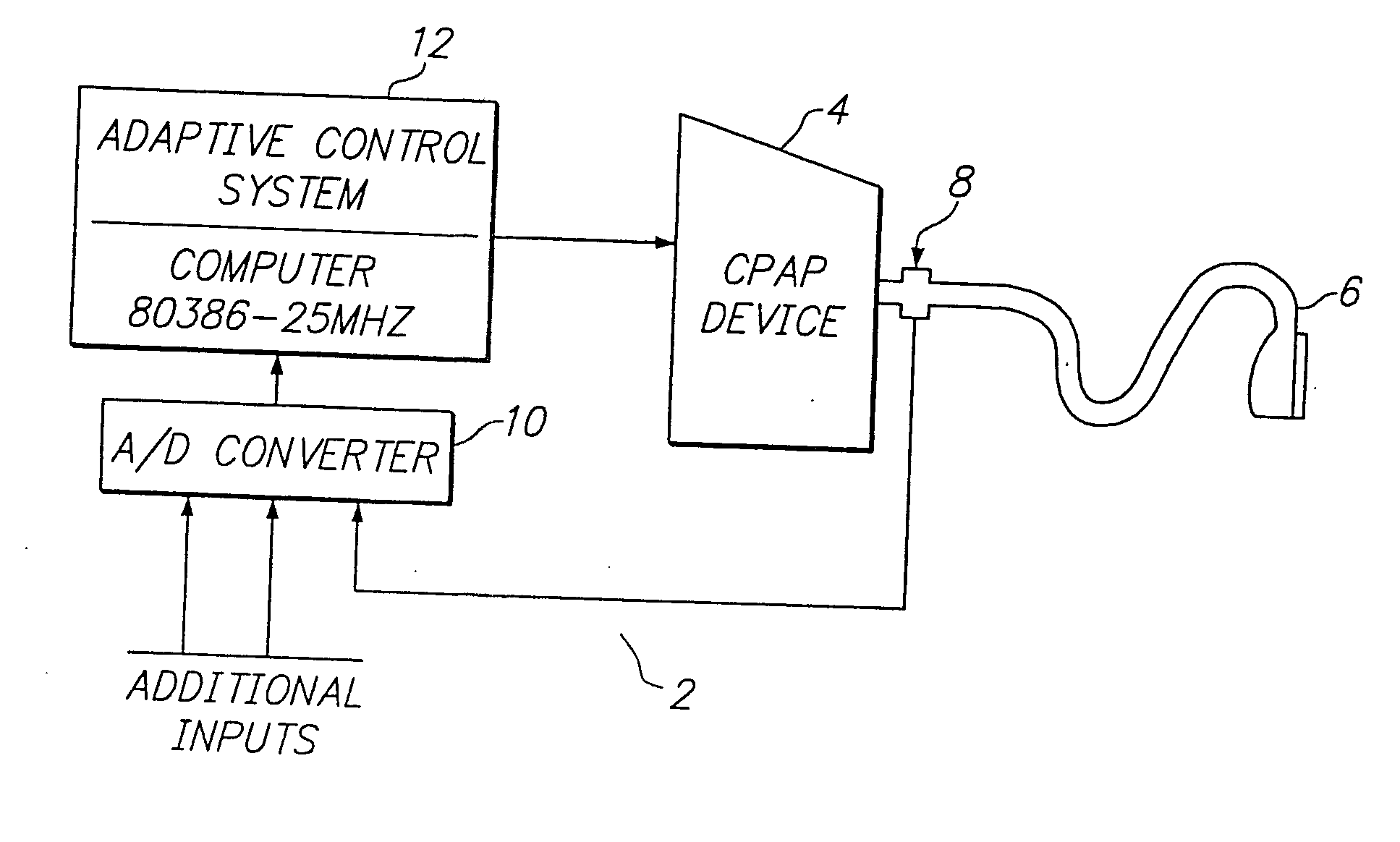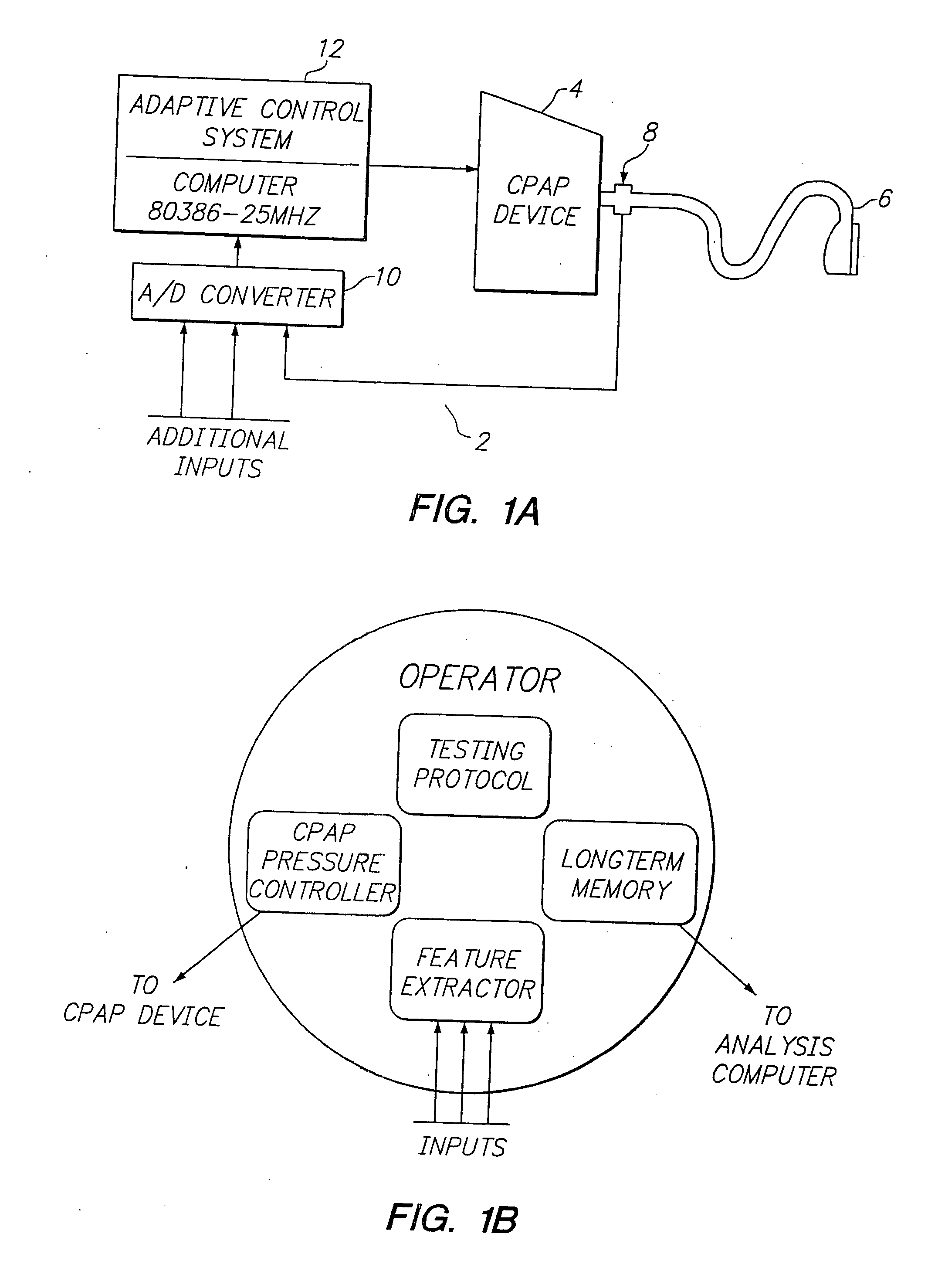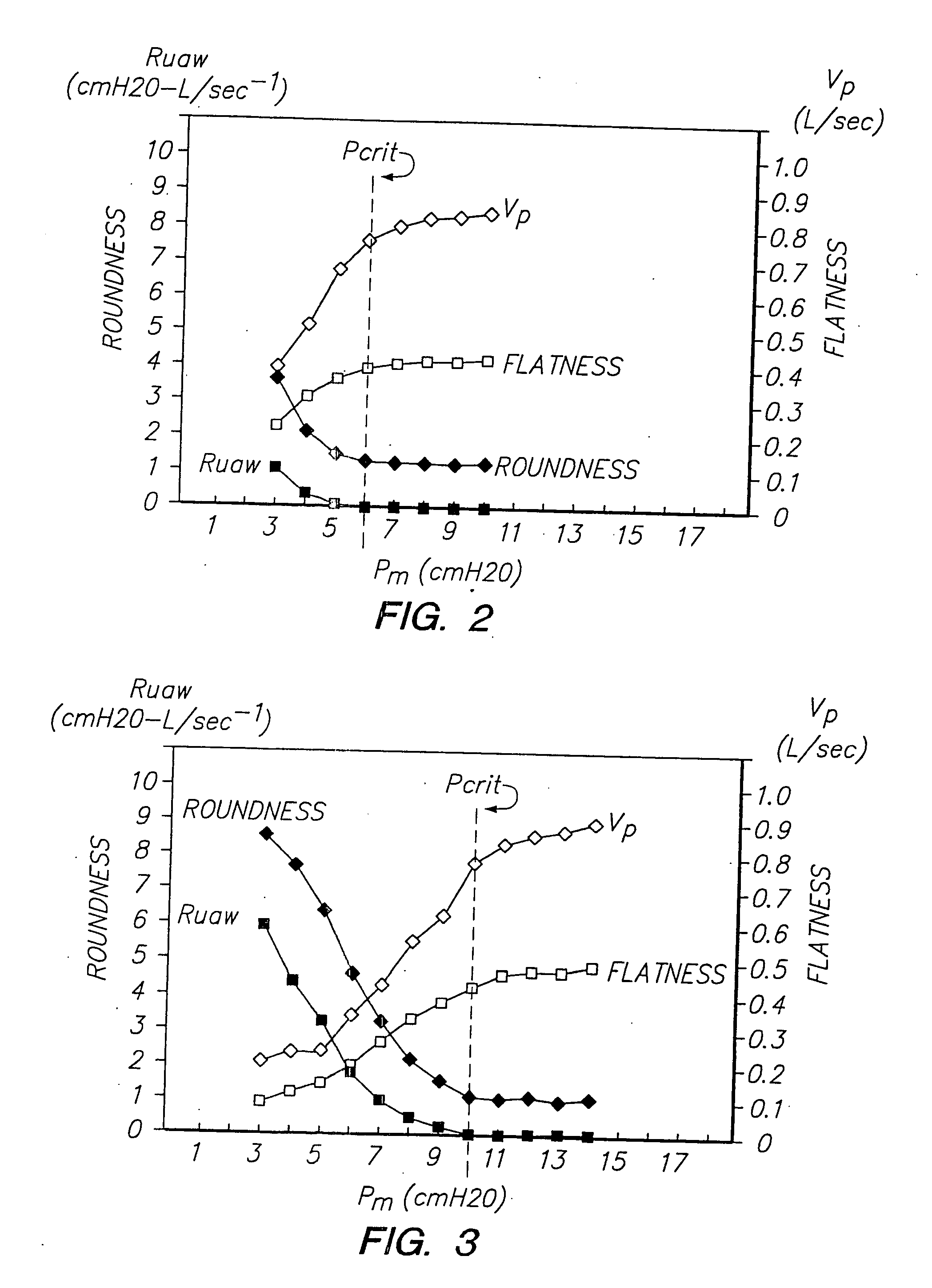Auto CPAP system profile information
a technology of auto-cpap and profile information, which is applied in the direction of valve details, operating means/releasing devices for valves, medical devices, etc., can solve the problems achieve the effect of reducing the likelihood of patient compliance, reducing overcrowding, and increasing the likelihood of side effects
- Summary
- Abstract
- Description
- Claims
- Application Information
AI Technical Summary
Benefits of technology
Problems solved by technology
Method used
Image
Examples
Embodiment Construction
1. Overview
[0026] In accordance with a preferred embodiment, the present invention relates to an auto-CPAP system for adaptively providing continuous positive airway pressure in an upper airway system (e.g., pharyngeal airway of a patient). The auto-CPAP system performs detection, analysis, and decision-making functions.
2. System Description
[0027] As illustrated in FIG. 1a, an exemplary system is generally labelled 2 and includes means for detecting airflow from the CPAP device. The means of detecting airflow is shown in FIG. 1a to include a pneumotach 8 for measuring instantaneous airflow. The pneumotach includes a pressure transducer and an amplifier for generating an electric signal proportional to airflow.
[0028] Airflow is used to assess the respiratory and dynamic mechanical characteristics of a patient's pharyngeal airway (PA) during sleep and to adjust the therapeutic CPAP pressure as required. Total airflow is the sum of non-respiratory and respiratory airflow. The non...
PUM
 Login to View More
Login to View More Abstract
Description
Claims
Application Information
 Login to View More
Login to View More - R&D
- Intellectual Property
- Life Sciences
- Materials
- Tech Scout
- Unparalleled Data Quality
- Higher Quality Content
- 60% Fewer Hallucinations
Browse by: Latest US Patents, China's latest patents, Technical Efficacy Thesaurus, Application Domain, Technology Topic, Popular Technical Reports.
© 2025 PatSnap. All rights reserved.Legal|Privacy policy|Modern Slavery Act Transparency Statement|Sitemap|About US| Contact US: help@patsnap.com



